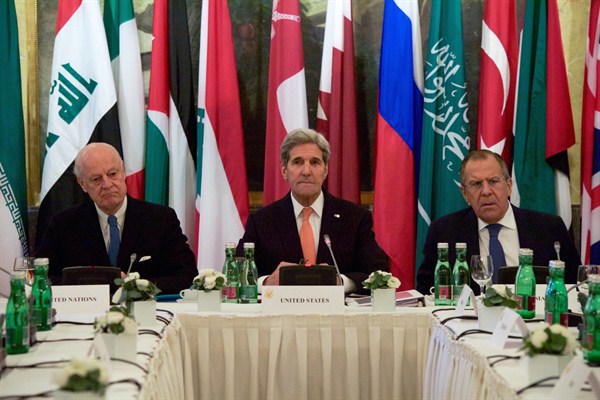Desperate times call for desperate conflict-management measures. This weekend, at talks on Syria convened in Vienna at the behest of Russia and the U.S., diplomats called for Damascus and mainstream opposition groups to agree to a national cease-fire, in parallel with continued offensives against the self-declared Islamic State and al-Qaida-affiliated fighters. The five permanent members of the United Nations Security Council pledged to back a “U.N. endorsed ceasefire monitoring mission in those parts of the country where monitors would not come under threat of attacks from terrorists.”
Will this be a case of “the third time’s the charm” for peacekeeping in Syria? Early in the civil war, two international observer missions tried to stem the country’s collapse into all-out war. The first, sent by the Arab League in December 2011, was grossly incompetent and barely lasted a month. The second, launched by the U.N. in April 2012, was more professional but no more successful. The blue berets deployed to oversee a cease-fire that was collapsing as they arrived. They made strenuous efforts to monitor the rising violence, but China and Russia blocked any serious reaction by the Security Council.
These failed efforts notwithstanding, mediators grappling with Syria have remained confident that international monitors will be needed to prop up any peace process. “If the Syrian government ever assents to a cease-fire with its more moderate opponents,” I argued in January, “an international monitoring mission may be needed to boost trust in the deal.” The U.N. has contingency plans for over 10,000 observers. It now needs to dust them off.

